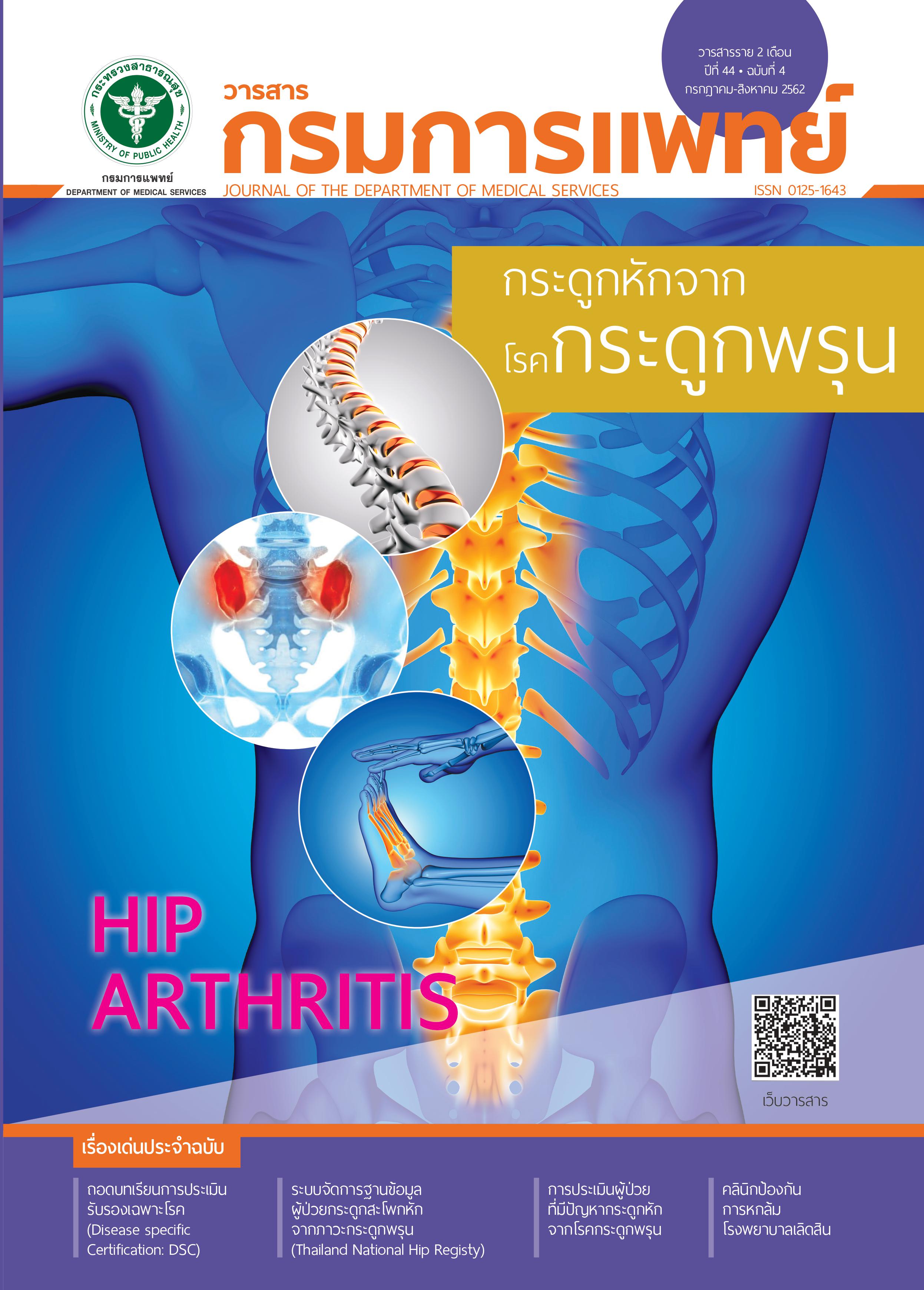Development of Nursing Guideline for Prevention and Control of Carbapenem Resistant Enterobacteriaceae (CRE) in Pediatric Patients Care
Keywords:
Carbapenem resistant Enterobacteriaceae (CRE), Guideline for Prevent and Control drug resistance, The promotion of knowledge and practical supportAbstract
Objectives: The purposes of this study were to develop and study the effect of using nursing guideline for prevention and control of Carbapenem Resistant Enterobacteriaceae (CRE) in pediatric patients care. This research consisted of 2 study cycles: Cycle 1: Development and study the effect of using nursing guideline. Cycle 2: Study the effect of using nursing guidelines after promoting knowledge and supporting according to the PRECEDE - PROCEED model. Methods: This study is an action research. The sample group of professional nurses in CRE Infection Ward at Queen Sirikit National Institute of Child Health was divided into 2 groups, 40 persons in each cycle. The data were analyzed by percentage, mean and standard deviation and test the statistically significant difference of the arithmetic mean to compare the results of cycle 1 and cycle 2 with independent t-test. Results: Nursing guideline for prevention and control of CRE in pediatric patients care includes hand hygiene, contact precautions, educating for personnel patients and relatives, cohorting patients and staff, communication, environmental cleaning, CRE screening and active surveillance testing. Problems and obstacles of the implementation are the lack of knowledge and confidence in practice, complexity of the procedures, inadequate personal protective equipment, insufficient disinfectants, being blamed or punished. After the development of guidelines with the promotion of knowledge and practical support according to the PRECEDE - PROCEED model, the professional nurses were knowledgeable, satisfied, and able to follow the guidelines more accurately, at 0.01 and 0.05 significant level. The incidence of CRE after the development of guidelines with the promotion of knowledge and practice, was lower than in the first cycle, at 0.01 significant level. Conclusion: Strengthening knowledge and supporting compliance with problems and obstacles helping nurses to follow better guidelines
References
Rhomberg PR, Jones RN. Summary trends for the meropenemyearly susceptibility test information collection program: a 10-year experience in the United States (1999-2008). Diagnostic microbiology and infectious disease 2009; 65:414-26.
Patel G, Huprikar S, Factor SH, Jenkins SG, Calfee DP. Outcomes of carbapenem-resistant Klebsiella pneumoniae infection and the impact of antimicrobial and adjunctive therapies. Infection control and hospital epidemiology 2008; 29:1099-106.
Montagnani C, Prato M, Scolfaro C, Colombo S, Esposito S, Tagliabue C, et al. Carbapenem-resistant Enterobacteriaceae Infection in Children. The Pediatric infectious disease journal 2016; 35:869-8.
Doi Y, Paterson DL. Carbapenemase-producing Enterobacteriaceae. Seminars in Respiratory and Critical Care Medicine 2015; 36:74-84.
Green LW, Kreuter MW. Health Program Planning: An Educational and Ecological Approach (4th ed.). New York: McGraw-Hill; 2005.
Jarenpan J, Tansakul C. Health Behavior (4thed.). Mahasarakham :Klung Nana WIttaya; 2006.
Kemmis S, McTaggart R. The Action Research Planer (3rd ed.). Victoria: Deakin University; 1988.
Watanawong S. Psychology for training adult (3rd ed.) Bangkok: Expernet Publishing; 2012.
Luangaram Y. Effects of training, feedback, and provistion of blood drawing kit on knowledge of nurse and blood cultures contamination rate. Chiang Mai University; 2008.
Goldrick BA, Turner JG. Education and behavior change in prevention and control of infection. In: Soule BM, Larson EL, Preston GA. (eds.), Infections and nursing practice: Prevention and control. St. Louis: Mosby; 1995.
Kraibut K. Effects of promoting clinical practice guidelines implemtnation on nurses’ practices and incidence of ventilator associated pneumonia in a General Hospital. Dissertations, Academic – Nursing. Infection Control Nursing. Chiangmai University; 2008.
Ritklar L, Saiphoklang N. Results of Promoting the Clinical Nurse Practice Guidelines for Mechanically Ventilated Patients and Incidence of Ventilator – Associated Pneumonia in a Medical Ward at Thammasat University Hospital. Nursing Journal 2015; 42:95-104.
Downloads
Published
How to Cite
Issue
Section
License
บทความที่ได้รับการตีพิมพ์เป็นลิขสิทธิ์ของกรมการแพทย์ กระทรวงสาธารณสุข
ข้อความและข้อคิดเห็นต่างๆ เป็นของผู้เขียนบทความ ไม่ใช่ความเห็นของกองบรรณาธิการหรือของวารสารกรมการแพทย์



